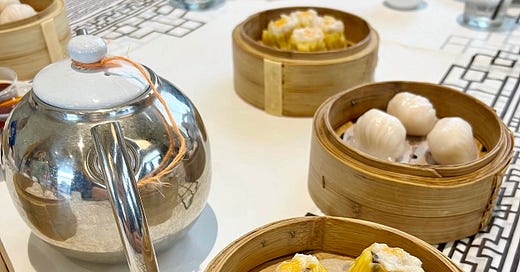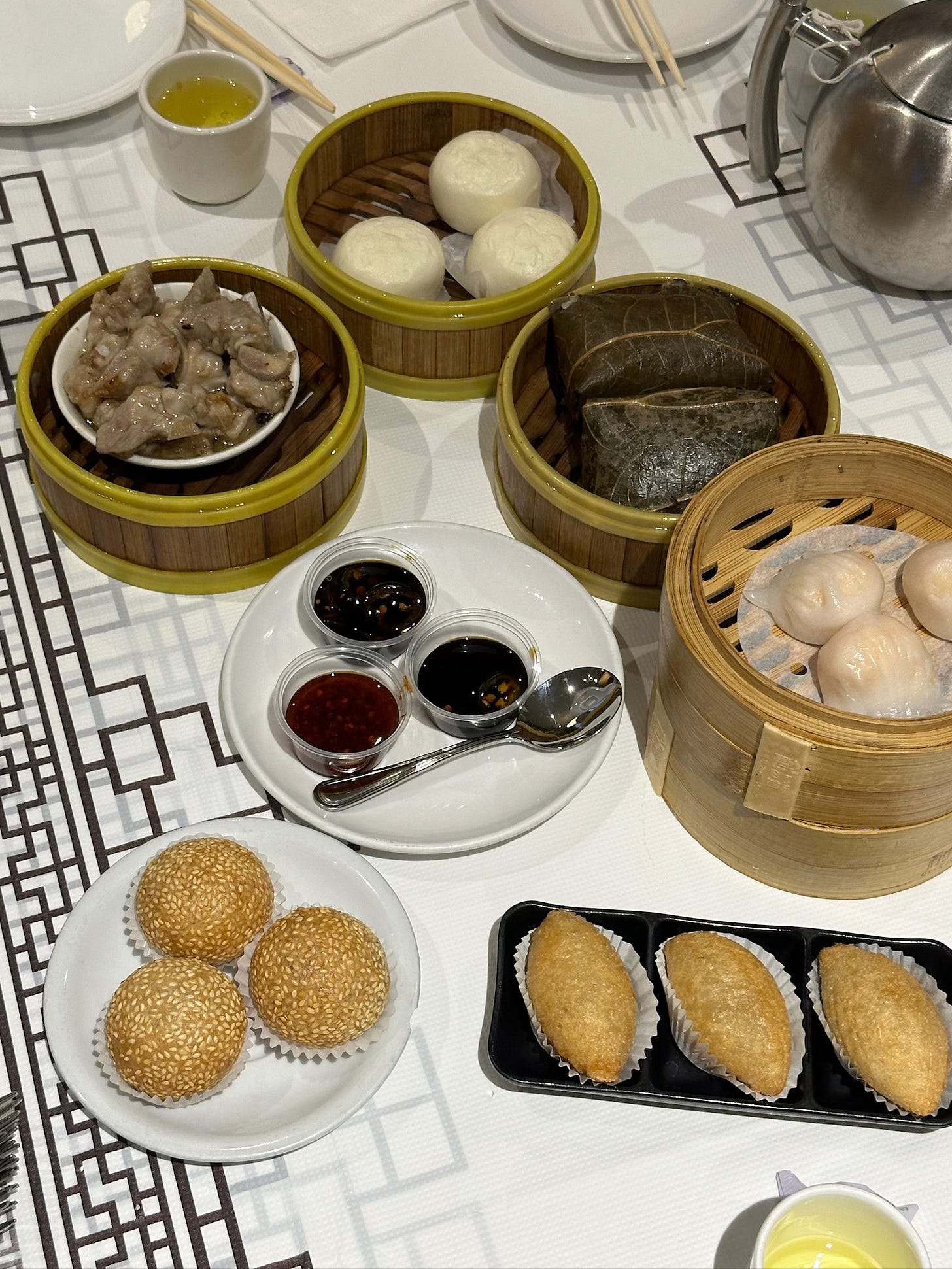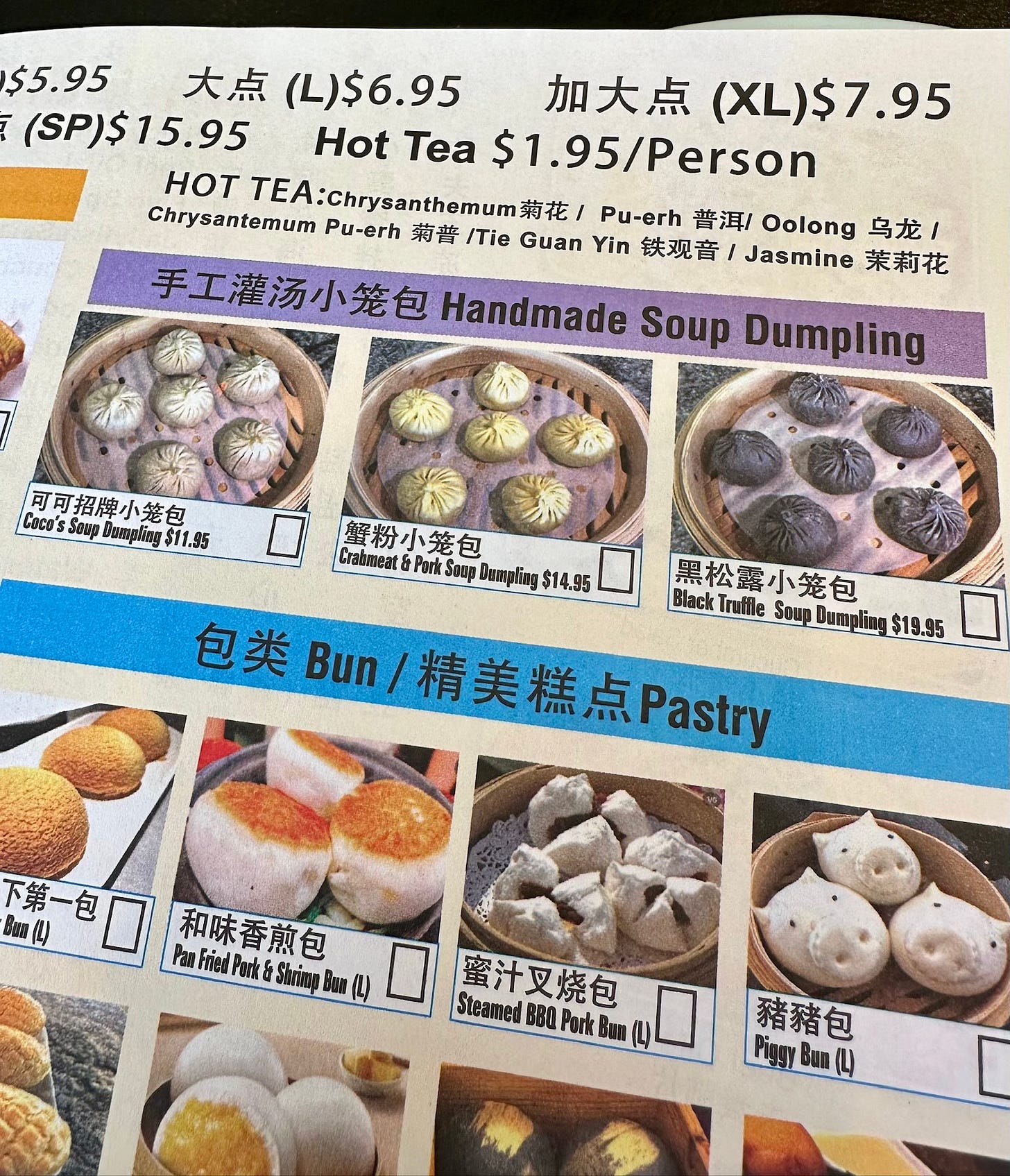Dine Like an Expert: How to Enjoy Dim Sum
Plus, the list of 2025 James Beard Award finalists is out. There's always next year, Columbus.
Before we dive into dim sum, a quick note on why you should become a paid subscriber of The Columbus Foodletter…
Right now, we’re offering most of our content for free because we want to prove its value—and we’re just six months into this Foodletter journey. If you’ve been following along, you’ve seen that we’re covering Columbus’ food scene in a way no one else is.
We’re not just rehashing press releases; we’re interviewing experts, exploring Columbus restaurant history, occasionally breaking news and driving across the city to discover hidden, immigrant-owned gems. That takes time, effort, resources and relationships built over many years.
Quality research and writing aren’t free. As food costs rise, we’ve chosen a subscription model to ensure we can continue delivering thoughtful, in-depth coverage.
If you’re reading this, you’re someone who values great food and is willing to invest in unique dining experiences. An annual subscription costs less than a single fine-dining dinner—we write about those spots, too—and it pays off. We help you discover restaurants that truly deserve your money while steering you away from overpriced or disappointing meals.
By subscribing, you’re not just supporting independent journalism—you’re making sure we can keep uncovering the best (and best-value) food experiences in Columbus.
Join us today and be part of something delicious.
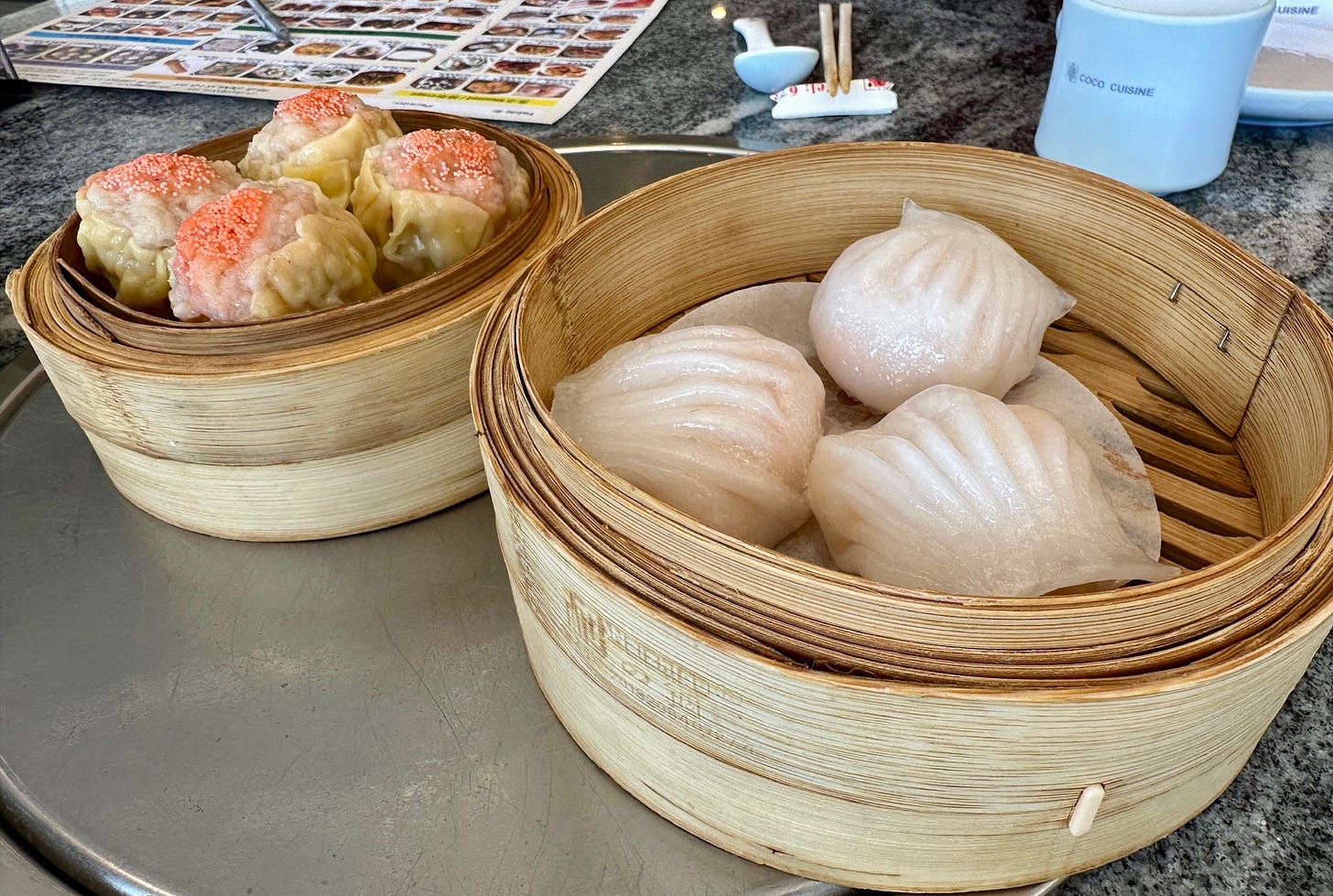
Dine Like an Expert: How to Enjoy Dim Sum
By Bethia Woolf
We received several requests for a "Dine Like an Expert" dim sum edition, so we recruited our friend, local gourmand and Chinese food aficionado Rod Chu. Rod says his current go-to spot for dim sum is Dublin’s Ty Ginger Asian Bistro, but we recently met him for lunch at one of the newer entrants to the Columbus dim sum market, Coco Cuisine on Bethel Road.
Rod explained that while people often think of dim sum as just dumplings, it actually includes a wide variety of dishes such as steamed and pan-fried items, pastries and congee. The term "dim sum" means "to delight the heart," and it consists of small bites, similar to tapas. A well-balanced meal of Cantonese dim sum should feature a variety of contrasting flavors, textures and appearances to stimulate the senses. The idea is that by pleasing the senses, you also bring joy to the heart.
A dim sum menu may have more than 30 dishes. In China, the dishes are called dim sum, but the meal itself is known as "yum cha," which means "to drink tea." Dim sum is traditionally served in the morning and is meant to be shared, allowing diners to enjoy a greater variety of flavors. It is a meal designed for conversation and lingering.
Classic Cantonese Dim Sum Dishes
Some of the most classic Cantonese dim sum dishes include:
Har gow (shrimp dumplings)
Shu mai (open-topped pork and shrimp dumplings)
Lo bak go (pan-fried turnip cakes)
Cheong fun (steamed rice crepes filled with shrimp, beef or other ingredients)
Steamed bao (typically filled with barbecue pork)
Lo mai gai (sticky rice wrapped in lotus leaves)
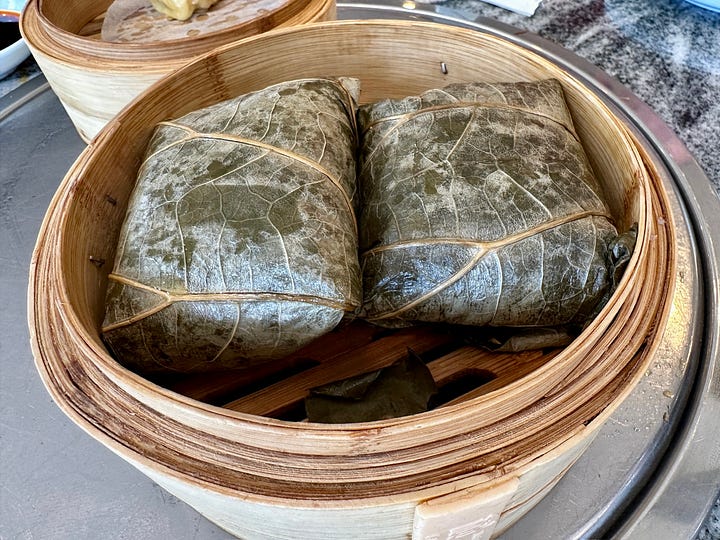
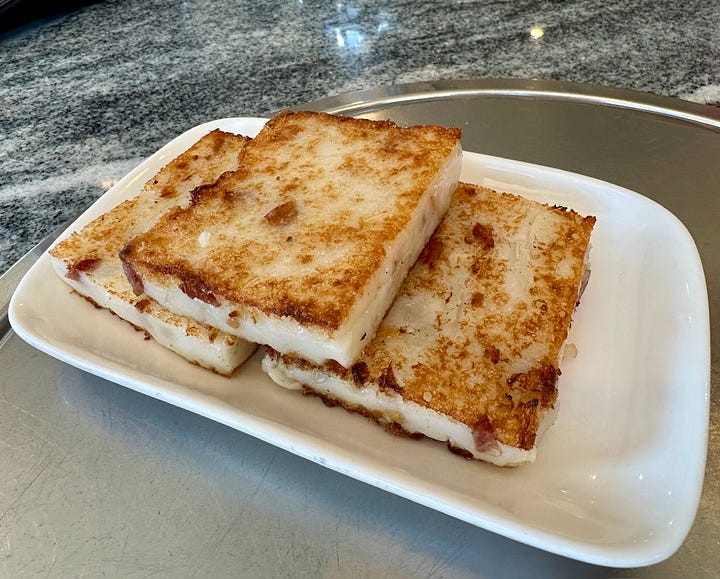
For the more adventurous diner, you can try delicacies such as beef omasum (tripe) steamed with ginger and garlic (available at TY Ginger), and seafood dishes like jellyfish and curry fish balls.
Chicken feet are another dim sum classic. People make stock from chicken feet because they are packed with flavor thanks to the bones and fat. They are also high in collagen, which is considered beneficial for your skin. Many dim sum diners enjoy the gelatinous texture of chicken feet, and at Ty Ginger they come steamed with black bean sauce. To eat them, pick one up with chopsticks and nibble off the skin, one joint at a time, placing it back on your plate between bites. You are not expected to eat the whole foot at once.
Rod noted that Chinese diners typically do not eat an entire meal of dim sum. Instead, they treat these small dishes as appetizers, and then often order congee (savory rice porridge), a noodle dish and a vegetable to round out the meal. These additional items can often be found on the reverse side of the dim sum menu. Rod recommends beef chow fun or pan-fried noodles as classic choices. For vegetables, he suggests asking what is fresh, though common options include pea tips or Chinese broccoli. The classic congee is pork with century egg (preserved egg), but Rod's favorite is fish fillet congee.
Tea
Tea is the traditional beverage to accompany dim sum. Rod recommends chrysanthemum pu-erh tea (also known as gook po cha). In Chinese medicine, chrysanthemums are believed to have cooling properties, while fatty foods are considered heating, so they balance each other. The fermented, aged pu-erh tea is thought to aid digestion by breaking down fat, making this blend a perfect match for fried dim sum dishes. Etiquette dictates that diners should pour tea for others at the table. To say thank you without interrupting the conversation, Chinese diners often tap their fingers on the table as a polite acknowledgment.
Desserts
Another integral part of dim sum is dessert, which may include egg tarts, sesame balls, sweet buns and sometimes cold puddings or jellies. Pineapple buns, despite their name, do not contain pineapple; the name comes from their golden color and textured cookie crust, which resembles a pineapple.
Rod’s Advice for Ordering Dim Sum
Order in batches. To ensure dishes arrive hot and to avoid being overwhelmed, Rod recommends ordering a few items at a time instead of everything at once.
Judge a restaurant by its har gow. At a new dim sum spot, Rod says he always orders har gow first, because a good har gow is a sign of a high-quality dim sum restaurant. The rice wrapper should be translucent and thin—but not so thin that it falls apart. The filling should include whole shrimp (not just shrimp paste) and should not be soggy.
Ask for condiments. If not automatically provided, request sauces that pair well with your dishes:
Turnip cakes go well with hoisin sauce.
Soup dumplings pair with black vinegar and ginger.
Har gow and shu mai go well with soy sauce or chili oil.
Signal for more hot water. To request a teapot refill, lift or flip the lid (depending on the teapot’s design). Experienced servers will recognize this signal.
Ask for clean plates. You can ask the server for a clean plate when you switch from savory dim sum to dessert dishes. This is useful if your plate is covered with soy sauce or chili oil.
Where to Find Dim Sum in Columbus
TY Ginger Asian Bistro - 5689 Woerner Temple Road, Dublin
Chuan Jiang Hao Zi - 496 Ackerman Road, Olentangy West
Coco Cuisine - 751 Bethel Road, Northwest Columbus
Helen’s Asian Kitchen - 1070 E. Dublin-Granville Road, North Side
Notes
Around the Columbus Food & Drink Scene
The 2025 James Beard Award finalists were announced yesterday and no Columbus names made the cut. Law Bird (Outstanding Bar), Dan the Baker (Outstanding Bakery) and chef Avishar Barua (Best Chef: Great Lakes) had all been named semifinalists for this year’s coveted awards. It was the second semifinalist nod in a row for Barua and the first such nomination for Law Bird and Dan the Baker. However, there were two finalists from Ohio: Chef David Jackman of Cincinnati’s Wildweed is a finalist for Best Chef: Great Lakes, and Mike Stankovich of the Cincinnati bar Longfellow is a finalist for Outstanding Professional in Cocktail Service.
Charmy’s Market, which recently replaced Hills Market Downtown, will celebrate its grand opening on April 12 from noon to 3 p.m. The woman-owned market at 95 N. Grant Ave. also has new hours and will be open until 9 p.m. daily.


